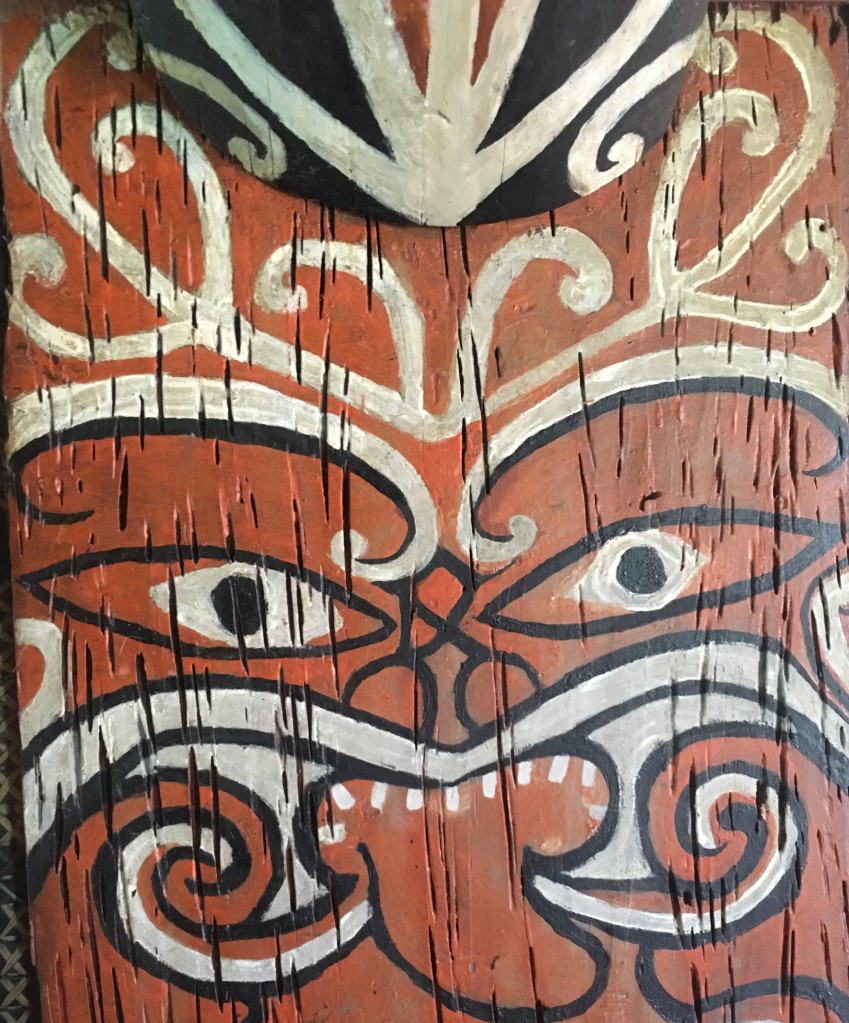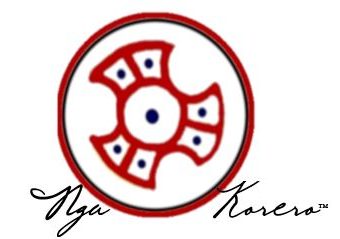The genesis of Ngai Tamanuhiri begins with a single action. It starts with the Rua-kumara affair (also known as the ‘Kumara pit incident’) which was an affair that Tamanuhiri had with Hine-nui-te-po, the wife of his neighbour Tawake-whakato. This event ultimately set into action the events necessary for the expansion of Tamanuhiri’s mana, through acts of agitation and disruption which occurred between the loosely affiliated leading families of the old Ngai Tahu tribe in the aftermath. It presented an opportunity for pre-existing mana over the whenua, awa, moana and other collection grounds to be challenged, consolidated, or extinguished. Korimuroa is not just a battle, it was considered as the first real battle that Tamanuhiri was involved with.
Ngai Tahu was the original banner of the descendants of Tahu inhabiting Muriwai, Te Reinga, Whakaki and other places. Like the flow of the tides does the mana of ancients rise and fall. Ngai Tamanuhiri much like Rongowhakaata is a title that was established over generations, used and discarded as it was needed. Entire lives were lived, people were loved and lost, wars were fought with the same determination as peace was waged.
During the lifetime of Tamanuhiri we were still known as Ngai Tahu, in the time of his Grandchildren we adopted the Ngai Tamanuhiri war banner, during the time of their grandchildren’s grandchildren Ngai Tahu-po emerged as a nickname for Ngati Kahutia following the cremation of Koroiti in his whare at Rangihoua, significant mana was then built into the Ngai Tahu-po banner by the great Ngati Paea warlord Tawheo-pohatu. The Ngai Tahu-po banner was again used by Ngati Rangiwaho loyalist chief Wi Kaipuke at the battle against Te Kooti as Makeretu. It is also interesting to note that during the mid-nineteenth century the names of Ngai Tahu-po and Ngati Kahungunu were used interchangeably by pakeha to refer to the southern Turanga tribes. It Is relevant to note that Ngati Porou began to expand and push its borders outwards in the twentieth century. Ngai Tamanuhiri however began to consolidate its mana from Te Kowhai to Paritu, as opposed to using the Ngai Tahu banner to form a confederation.

The Rua-kumara affair can be understood in the modern context when Tamanuhiri short of sugar decides to visit the girl next door Hine-nui when her partner was out at work, so she invites him in for coffee. She decided YOLO, they slow dance in the doorway and Neighbours should be there for one another, that’s how neighbours become good friends. She was delighted to entangle herself in some unmitigated, hardcore ‘hanky panky’. The heavens were engulfed with throbbing flames of ecstasy, the fires of Turanga were lit and war would soon blaze across the horizon.
There are two versions of the context surrounding the Rua-kumara affair, and also several different narratives as to the tone of how the story is told. One narrative outlines Rongomaiawhea as a high-ranking woman who was tired of giving birth to Tamanuhiri’s children and permits him to find another wife. The second narrative is that both the wife of Tamanuhiri and his neighbour Tawake-whakato (leader of another branch of Ngai Tahu) both lost their wives at the same time, with Tawake-whakato being the first to remarry.
Tawake-whakato was the son of Waka-nui a descendant of Rakahurumanu and inhabited a pa built by his father on the maunga Taranaki where his people conducted gardening, planting and other activities below at Whakorekore-te-kai. His first wife Mahaki-nui was a daughter of Kahungunu and Rongomaiwahine from this union came: Ruakumea (f), Ruaaraaranui (f), Haparapara, Ruaihunui, Rakaitokona, Rakaimaro, and Tahitorangi.

When Mahaki-nui died, Tawake-whakato then married Hine-nui, a daughter of Te Aonui and Paikuha. She was unable to have children with him and perhaps assumed that she was infertile. One day Tamanuhiri stood upon Matiti looking down at Hine-nui working in the rua-kumara at Whakorekore te kai. Tamanuhiri went down and cornered Hine-nui in the pit with an alternative offer that she did not refuse. Hine-nui left her partner Tawake-whakato for Tamanuhiri when she became pregnant, delighted she expressed the eternal words: “Taku he ki te huatea mo Tawake-whakato, no muri i te huauri o Tamanuhiri” (My problem was to choose the fair-fruits of Tawake-whakato, before the dark fruits of Tamanuhiri). Essentially this whakatauki is a statement of fertility, but it has greater depth. Firstly it appropriates blame onto Tawake-whakato and absolves her perceived ‘he’ or fault. secondly, it is a restatement of whakapapa back to Tangaroa, and is a veiled analogy to the collection of kaimoana held by Ngai Tamanuhiri today to collect only the Paua huauri, and to leave the Paua huatea. Today it is only known in its short forms as “Taku he ki te huatea, no muri i te huauri” (or ‘Taku he ki te huatea, no muri au i kite ai te huauri’). The famous rua-kumara where the incident took place, is where the great Tiemi Wirihana is buried, a fitting place of rest for one of the last great Ariki. To my knowledge, Hine-te-kapua was the eldest from this union and therefore was the child conceived in the rua-kumara that this whakatauki concerned.
When Hine-nui left Taranaki to live at Matiti following the Rua-kumara affair, the relationship between the two pa began to disintegrate. One day the situation escalated and Tawake-whakato was disrupted and forced to flee to Mahanga – a place at Te-mahia-mai-tawhiti. Ruakumea was captured and married Tamaraukura, soon after they had two children Rangiwaho, and Te Ahiahi-o-tahu. Tahitorangi and his sister Ruaaranui continue onwards to te Kihitu where Tahitorangi kills Pupuonuku, one of the sons of Tama-te-rangi. Ruaihunui flees to Te Pa o Paritu and marries Rangiakawa granddaughter of Hine-te-whatu (who held Mana over Whareongaonga at that time). Their children were Rakawahakura, Mokotaha, Tutekawa, and Rangihikaia. Following this scuffle Tamanuhiri then left Matiti to reestablish himself at Te Puru pa on a hill called pukehou a place at Te Pakowhai with his new wife and their children Hine-te-kapua (f), Tokanui, Paputatara, Te Aomaru and Tauheke.
One day Matuahanga, Tautuhi and their sister Mokara decided to visit their granduncle Tamanuhiri. They belonged to the section of Ngati Ruapani that inhabited Mangapoike. Their parents were Te Onoono-i-waho (son of Ruatapunui and Kurawharerangi daughter of Tamatea-moa who who built the whare-wananga Hamokorau with Rangi-nui – half brother of Kahungunu), and Kuraroa daughter of Tamatea-Upoko of Ngai-Tahu. When they arrived, they were taken net fishing at the mouth of the Maraetaha river. Unhappy with their share of fish one of the nephews struck Tamanuhiri on the head with a paddle, and they fled to whakaki. The consequence of this encounter was the erection of a Rahui called Hawai.
Ruaihunui did not acknowledge the mana of Tamanuhiri over the moana and threw the rahui down and continued fishing at the river mouth so Paea and Tamaraukura planned to ambush them. Not long after Ruaihunui and his people decided to go fishing again, while they were pulling in their nets Tamaraukura and Paea led an assault force to wipe out all resistance for breaking the Rahui and attempting to usurp the mana of their father in the battle of Korimuroa.

It was noted that many people were killed in this conflict and the survivors fled. Tamaraukura captured Ruaihunui at Whareongaonga. Tamaraukura then entered a cave and named it Te-Ana-a-Tamaraukura, and then named the high cliffs above after his wife Ruakumea, he later established his pa-tuwatawata called Whakairiahiahi nearby and placed a tapu snare above the pa called Papoto which would later become the pa of Takaratua a child of Tutekawa. There are conflicting stories as to whether Ruaihunui was killed, or whether he was allowed to continue living without mana on his wife’s land.

Mokotaha was apprehended at Ori, his life was spared, his brother Rakawahakura was not so lucky. With the proclamation of Paea-o-te-rangi “Ko taku hika, ko Rakawahakura. Ko toku kainga, ki Nga-rua-o-Hine-te-kawa” (My man is Rakawahakura, my lands are the pits of Hine-te-kawa), Rakawahakura (often credited as being one of the Dog-robbers that stole Kauere-huanui, the kuri of Tutekohi) was killed, consigned to the ovens and eaten. Another rahui was established at whareongaonga which ended the quarrels between Ruaihunui and Tamanuhiri and established the boundary of Tamanuhiri’s mana over the area at that time.
The Primary consequence of the battles with the family of Tawake-whakato was the ultimate victory of Tamanuhiri who seized mana over Maraetaha, and parts of Whareongaonga. The people of Ruaihunui were utterly defeated, a great number said to have been killed in the fighting. But the mana of Hine-te-whatu remained unmolested and flowed through Rangiakawa to Mokotaha which would lead to quarrels between the descendants of Tamanuhiri and Mokotaha later.
Many events happened after Korimuroa, entire lives were lived, some lived long enough to witness the scene set for Tuheke, son of Kaiariki (or Kaia) the youngest child of Tutekawa. He was considered to be a chief of ‘no note’ until he defeated and expelled Rakaiataane and Ngai Tawiri from whareongaonga in the battle of Pikikautuku. They were sent to exile at Tatapouri, never to return under the threat of extermination. This action had, and still has…. a profound impact on inter-tribal politics and relationships within Turanga – but this is another story for another time.
Etahi korero Whakamarama:
Te Matuahanga was the grandfather of Maungahuruhuru who married Tawiri-o-te-rangi (and had Te Rangitipukiwaho and Tamahurunga) and father of Tupakarangi who avenged Ruaihunui by “making water in the mouth of Rangiwaho” and is also credited with the slaying Tamaraukura I.
Kakauhia was the name of Tamanuhiri’s tapu net said to have also been desecrated by Ruaihunui.
Hine-Te-Kapua is the mother of Tamakanohi who married Hinepua, the daughter of Te Ahiwhakamauroa and Tawhiwhi (brother of mahaki) who was forced to see her father consigned to the oven called Te-umu-a-Tawhiwhi. Through her son, Tamakonohi come Hineterongo, Karakiarau (ancestor of Ngati Hikairo and Ngai Tuehi of Tawapata, Te Mahia), Tamateahirau (marries Tutekanao, child of daughter of Kaukohea, and has Tureia), and Porete.
Nga-rua-o-hine-te-kawa is a reference to an area between the Manga-nui-o-wai and the Tarakihinui streams at Whareongaonga. Manga-nui-o-wai, Tarakihinui and Puninga were later given as a gift to the chief Moki-te-rangi.
According to some of the old Ngai Tamanuhiri experts Tahungaehenui was a son of Te Rakaroa


